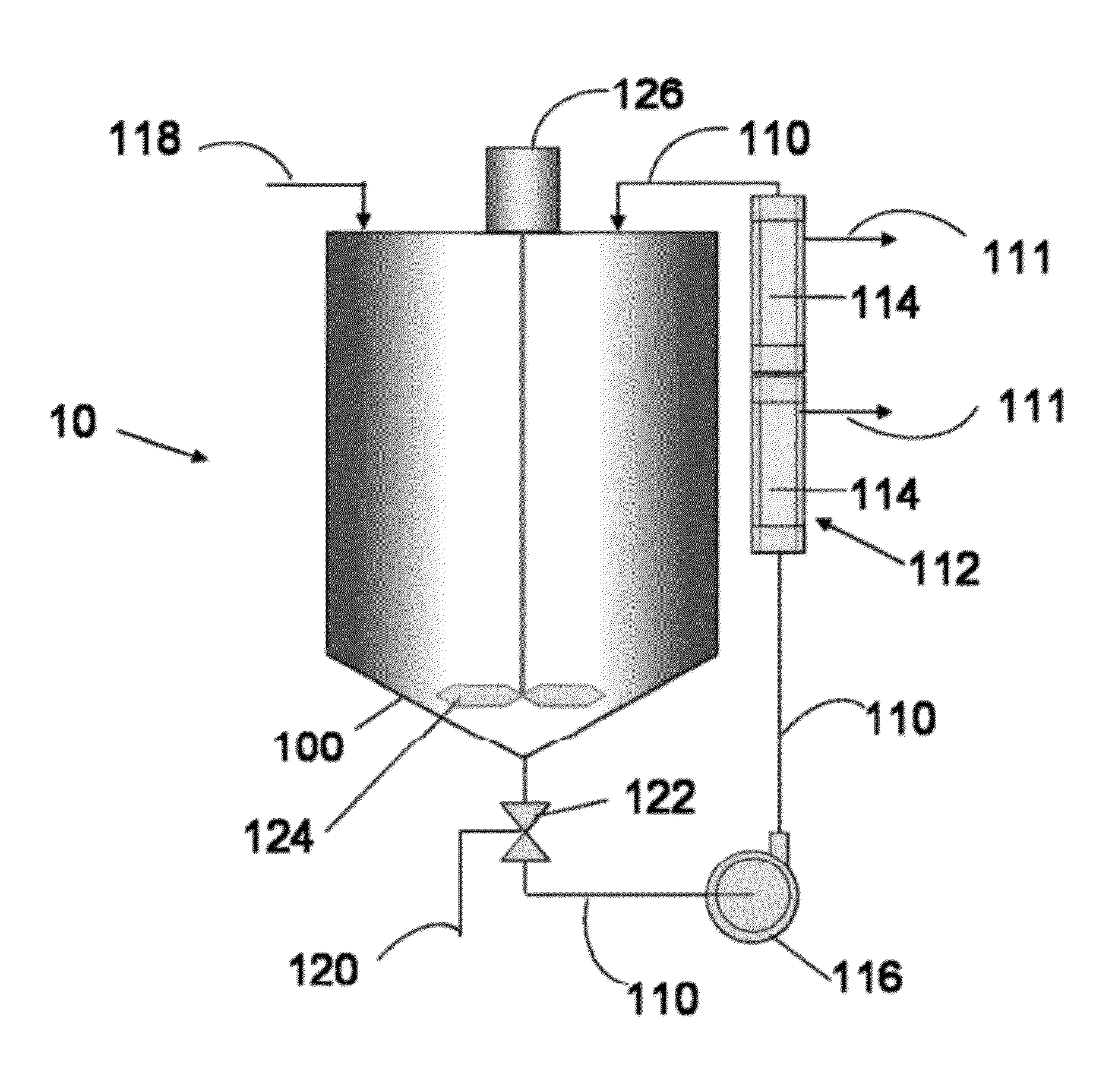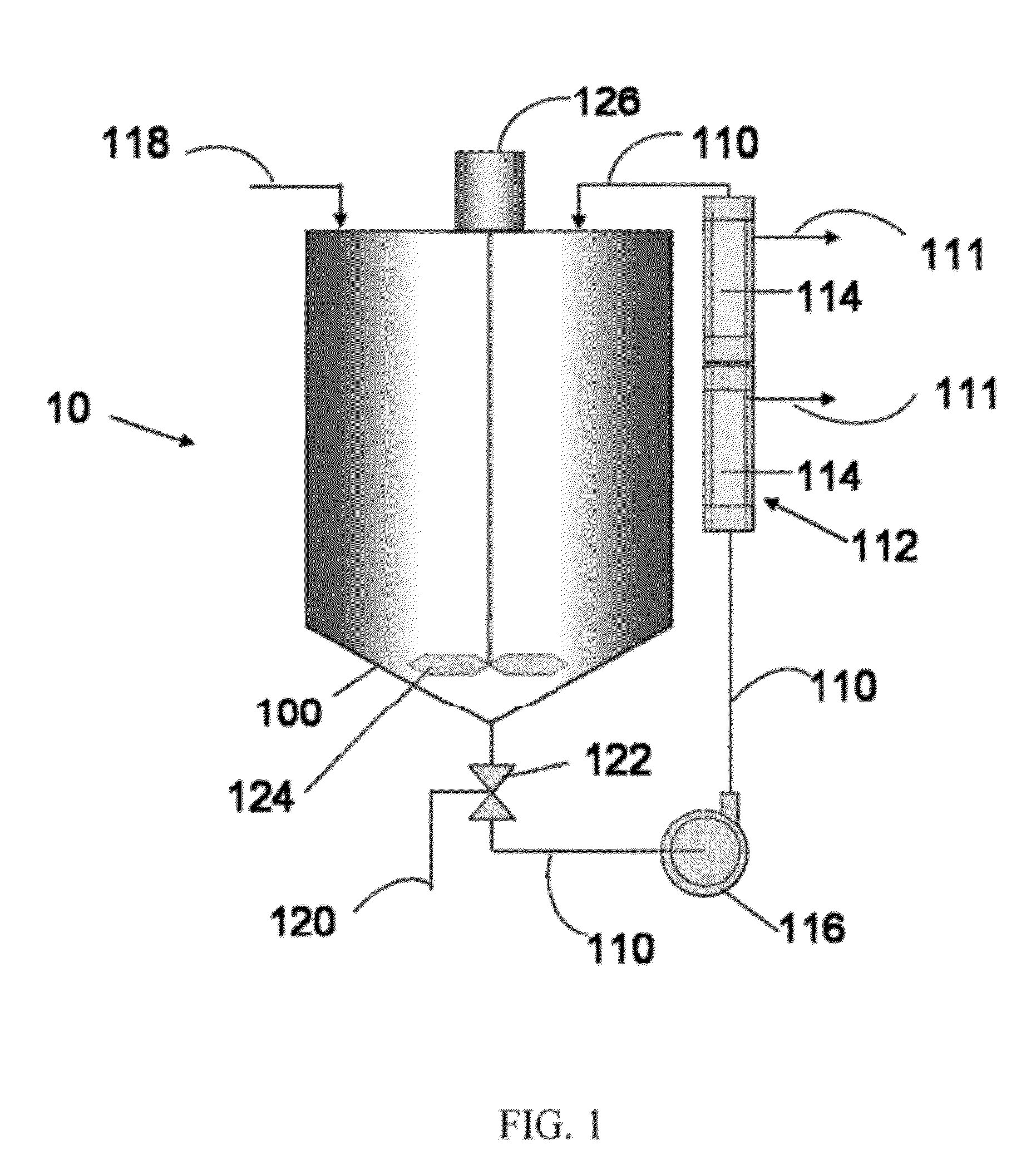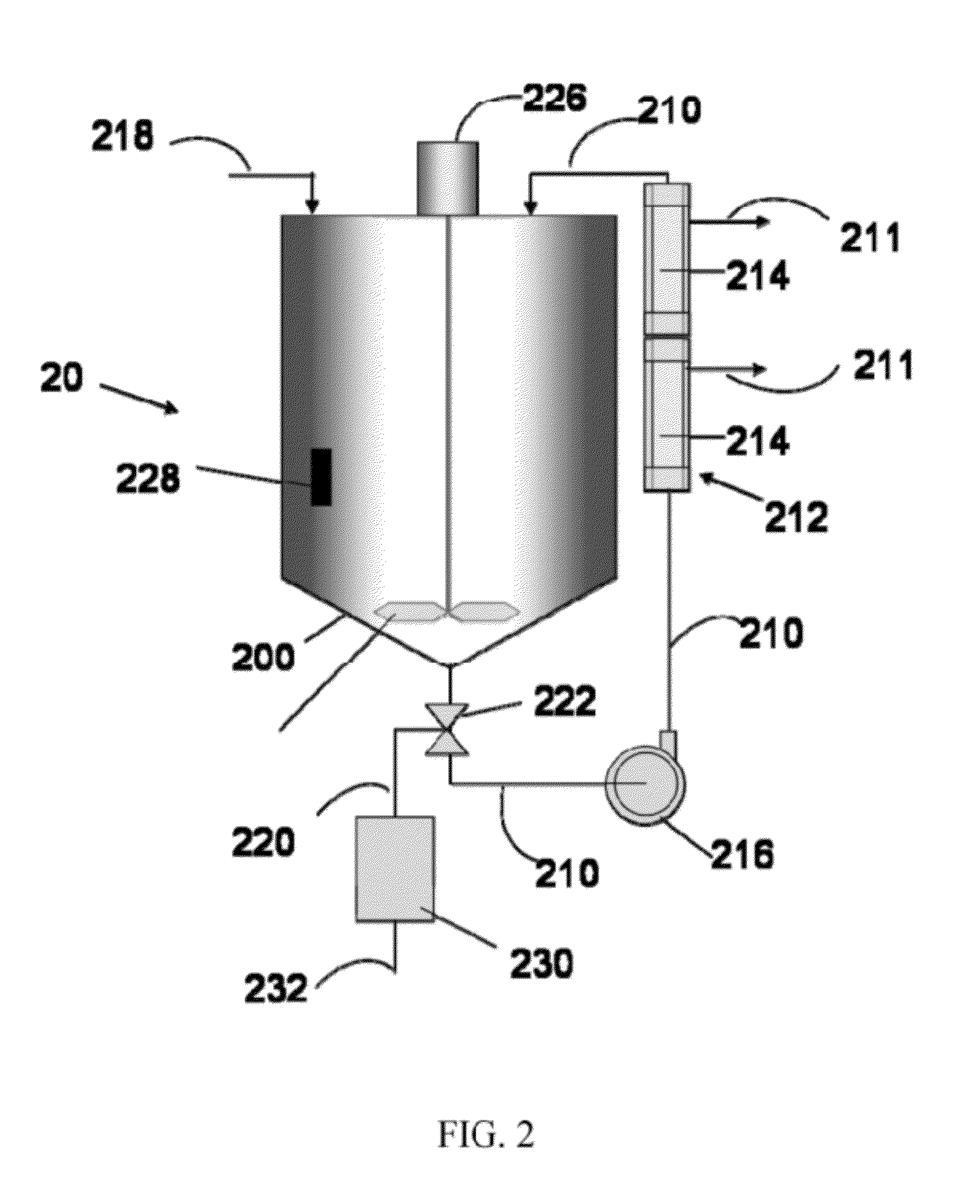CMP slurry recycling system and methods
a technology of chemical mechanical polishing and slurry recycling, which is applied in the direction of other chemical processes, water/sewage treatment, multi-stage separation processes, etc., can solve the problems of slurry recycling being a complex process involving a number of processing steps, affecting the effect of material loss, and affecting the quality of slurry, etc., to achieve the effect of low shear
- Summary
- Abstract
- Description
- Claims
- Application Information
AI Technical Summary
Benefits of technology
Problems solved by technology
Method used
Image
Examples
example 1
[0033]A recovered CMP slurry from a polishing operation is charged into a blending tank. The recovered slurry comprises a silica abrasive suspended in an aqueous carrier having a pH of about 9 to about 10, with an abrasive concentration of about 5 to about 10 percent by weight. The virgin, or fresh, non-recycle slurry (SS12, Cabot Microelectronics Corporation, Aurora, Ill.) from which the waste was generated has the following specifications: pH 10-11, silica concentration about 12.5 to about 12.6 percent by weight, a weight average silica particle size, Dw, of about 185 to 190 nm as determined using the CPS disk centrifuge. The recovered CMP slurry is pumped via a bearingless magnetic centrifugal pump from the tank though a circulation line into an ultrafiltration unit, and then back into the tank. The ultrafiltration unit is adapted to remove water from the recovered slurry passing through the unit. The recovered slurry is circulated through the ultrafiltration unit for a period of...
example 2
[0035]Following the general procedure outlined in Example 1, a silica based slurry recovered from a commercial polishing operation was recycled, without addition of fresh slurry. The recycled slurry was then used in a successive commercial polishing operation, and then again recycled. This process was repeated such that there were 7 polishing runs that used successively recovered and recycled slurry. The weight average particle size, Dw, and the number average particle size, Dn, were monitored in each of the original and recycle runs. FIG. 3 provides scatter plots of Dw (Panel A) and of particle polydispersity Dw / Dn (Panel B) for the seven successive recycling runs. Particle sizes described herein were determined using a CPS Instruments Incorporated disk centrifuge assuming an aggregate density of 1.33 g / cm3. As can be seen in FIG. 3, there is a gradual decrease in Dw as the number of recycles increases. Microscopic analysis of samples from the recycled slurries indicate the presenc...
example 3
[0036]Following the general procedure outlined in Example 1, a silica slurry recovered from a commercial polishing operation was repeatedly recycled, without addition of fresh slurry, as described in Example 2. The metal content of selected metals (e.g., Al, B, Ca, Co, Cr, Cu, Fe, K, Mg, Mn, Na, Ni, Ti, Zn, Zr) in the recycled slurries from the successive runs were monitored. The following trends were observed: Al, Ca, Cr. Cu, Fe, Mg, Mn, Ni, Ti, and Zn concentrations tended to increase, although not to levels above the specifications of the corresponding fresh non-recycled slurry. The concentration of B unexpectedly decreased, while the concentrations of Co, K, Na, and Zr appeared to be relatively unaffected by the recycling. It is believed that the increase in certain metals may come from the polished substrates and from the polishing pads utilized during the polishing operation. The results here show that the recycling process of the present invention does not lead to accumulatio...
PUM
| Property | Measurement | Unit |
|---|---|---|
| particle size | aaaaa | aaaaa |
| density | aaaaa | aaaaa |
| particle size | aaaaa | aaaaa |
Abstract
Description
Claims
Application Information
 Login to View More
Login to View More - R&D
- Intellectual Property
- Life Sciences
- Materials
- Tech Scout
- Unparalleled Data Quality
- Higher Quality Content
- 60% Fewer Hallucinations
Browse by: Latest US Patents, China's latest patents, Technical Efficacy Thesaurus, Application Domain, Technology Topic, Popular Technical Reports.
© 2025 PatSnap. All rights reserved.Legal|Privacy policy|Modern Slavery Act Transparency Statement|Sitemap|About US| Contact US: help@patsnap.com



